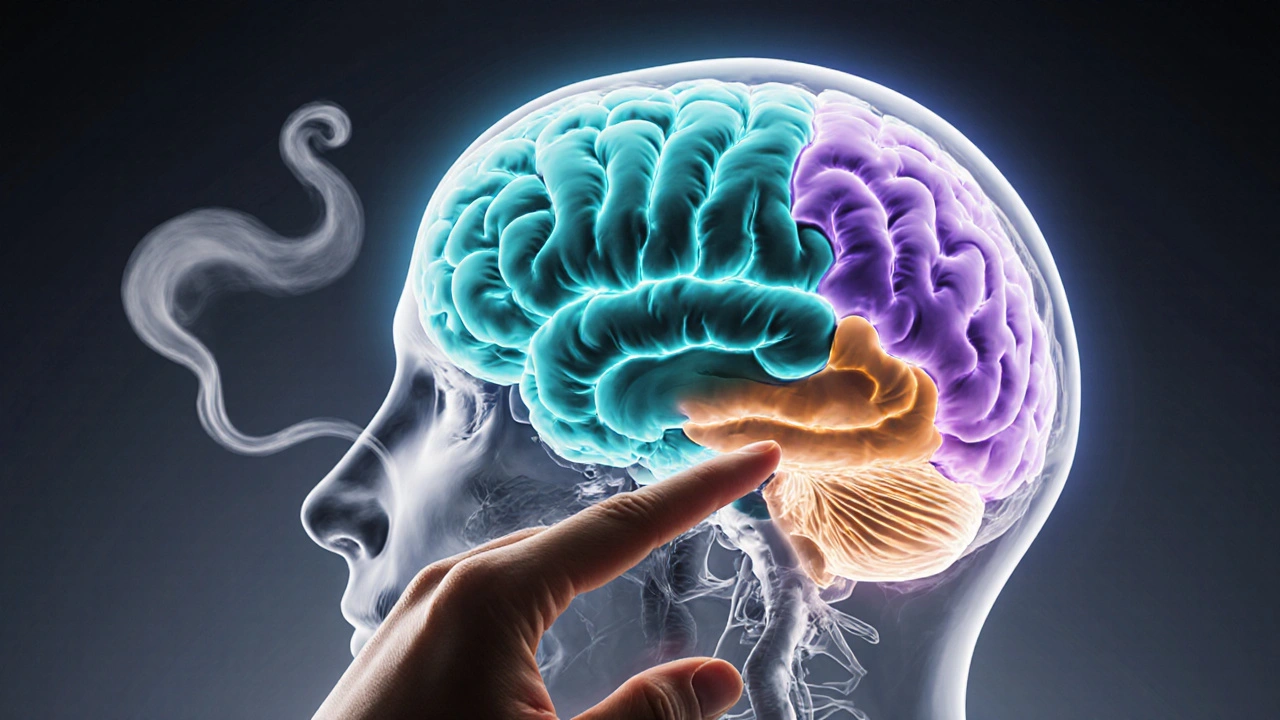Depression Treatment Calculator
Personalize Your Treatment Plan
Your Results
Key Takeaways
- Mindfulness trains the brain to notice thoughts without automatically reacting, which cuts the rumination cycle that fuels depression.
- Clinical trials consistently show moderate effect sizes for mindfulness‑based programs, comparable to traditional psychotherapy.
- Combining mindfulness with medication or CBT often yields the best outcomes for people with severe symptoms.
- Simple daily practices-breathing, body scan, and mindful walking-can be started in five minutes and scaled up over weeks.
- If symptoms linger or worsen, professional help is essential; mindfulness is a supplement, not a replacement, for medical treatment.
Depression can feel like a storm that never stops, but research over the past decade shows that a calm, focused mind can change the weather inside the brain. This article breaks down what mindfulness actually is, how it interacts with the biology of major depressive disorder (MDD), and which concrete steps you can take right now. You’ll also see how mindfulness stacks up against other common treatments, so you can decide whether it belongs in your recovery toolbox.
When we talk about Mindfulness as the practice of intentionally focusing attention on the present moment without judgment, we’re describing a skill anyone can develop, regardless of age, background, or clinical history. It isn’t a mystical concept; it’s a set of attention‑training exercises that reshape neural pathways and reduce the automatic grip of negative thoughts.
Major Depressive Disorder is a mood disorder characterized by persistent sadness, loss of interest, and a range of physical and cognitive symptoms that last at least two weeks. Around 264 million people worldwide meet the criteria, and the condition ranks among the leading causes of disability. Traditional care often involves antidepressants, psychotherapy, or a combination of both, but many patients experience side effects, partial response, or relapse, prompting a search for complementary approaches.
How Mindfulness Rewires the Depressed Brain
Neuroscience studies using fMRI and EEG have identified three brain regions most affected by mindfulness practice: the prefrontal cortex (PFC), the amygdala, and the default mode network (DMN). The PFC, responsible for executive control, gets stronger, while the hyper‑reactive amygdala-our threat detector-calms down. Meanwhile, mind‑wandering activity in the DMN drops by up to 30% after an eight‑week mindfulness program, meaning fewer ruminative loops that typically worsen depression.
At the chemical level, mindfulness has been linked to modest increases in serotonin and dopamine, neurotransmitters that regulate mood and motivation. It also boosts brain‑derived neurotrophic factor (BDNF), a protein that supports neuroplasticity-the brain’s ability to form new connections. In short, regular practice creates a friendlier environment for mood regulation.

What the Evidence Says
Since 2015, more than 30 randomized controlled trials (RCTs) have examined mindfulness‑based interventions for MDD. A 2022 meta‑analysis of 18 RCTs reported an average Cohen’s d of 0.45 for mindfulness‑based cognitive therapy (MBCT) versus treatment‑as‑usual, a medium effect comparable to that of standard CBT. Importantly, the benefit persisted at 12‑month follow‑up, suggesting lasting changes.
One landmark study from the University of Oxford followed 274 adults with recurrent MDD over two years. Participants who completed an eight‑week MBCT program had a 45% lower relapse rate compared to those who only received medication. The researchers highlighted that mindfulness helped patients notice early warning signs-like a sudden surge in negative self‑talk-and intervene before a full‑blown episode.
Practical Mindfulness Techniques for Managing Depression
- Focused Breathing (3‑5min): Sit upright, close eyes, and count each inhale and exhale up to ten, then start over. If thoughts drift, gently label them “thinking” and return to the breath.
- Body Scan (5‑10min): Lie down, close eyes, and systematically direct attention from toes to crown, noting sensations without trying to change them.
- Mindful Walking (5‑15min): Walk slowly, feeling each footstep, the shift of weight, and the contact with the ground. Use the rhythm to anchor thoughts.
- Thought Labeling (2‑3min, several times a day): When a negative thought pops up, silently label it “worry,” “judgment,” or “rumination” and watch it pass like a cloud.
- Gratitude Check‑in (1min): At the end of the day, name three things that felt good, however small, and savor the feeling for a few seconds.
Start with one exercise a day, gradually adding another as it feels comfortable. Consistency beats intensity; a daily five‑minute practice can be more effective than a weekly hour‑long session.
Integrating Mindfulness with Traditional Treatments
Most clinicians recommend a blended approach-mindfulness as a supplement rather than a stand‑alone cure, especially for moderate to severe MDD. Below is a quick comparison of three common options.
| Treatment | Primary Mechanism | Typical Effect Size (d) | Duration | Best For |
|---|---|---|---|---|
| Mindfulness‑Based Programs | Attention regulation & emotional acceptance | 0.40‑0.55 | 8‑12weeks, daily 10‑20min practice | Patients seeking non‑pharmacologic tools, relapse prevention |
| Cognitive Behavioral Therapy (CBT) | Cognitive restructuring & behavior activation | 0.50‑0.70 | 12‑20weeks, weekly 45‑60min sessions | Individuals who prefer structured, therapist‑guided work |
| Antidepressant Medication | Neurochemical modulation (serotonin, norepinephrine) | 0.30‑0.45 | 4‑6weeks to onset, ongoing as needed | Severe depression, contraindications for psychotherapy |
In practice, many therapists weave mindfulness exercises into CBT sessions, creating a hybrid model called Mindfulness‑Enhanced CBT. Patients who combine an SSRI with an eight‑week MBCT program often report faster symptom relief and fewer side‑effects.

Common Pitfalls and How to Avoid Them
- Expecting Immediate Mood Changes: Mindfulness works on the process, not the product. If you’re looking for instant happiness, you might get discouraged.
- Practicing When Exhausted: Fatigue can turn a gentle breath‑focus into a struggle. Schedule practice when you have a quiet, alert window.
- Over‑Analyzing the Practice: Treat the exercise like a chore. Keep it simple-notice, label, return.
- Skipping the ‘Check‑In’: Without reflection, progress stays invisible. Use a journal to note mood shifts after each week.
- Relying Solely on Mindfulness for Severe Cases: If suicidal thoughts appear, contact a mental‑health professional immediately. Mindfulness complements, not replaces, crisis care.
By being aware of these traps, you can keep your practice sustainable and effective.
When to Seek Professional Help
If you notice any of the following, it’s time to reach out to a clinician:
- Persistent hopelessness lasting more than two weeks.
- Loss of interest in all activities, including previously enjoyable ones.
- Significant changes in sleep, appetite, or energy.
- Thoughts of self‑harm or suicide.
- Inability to function at work or school despite mindful practice.
Professional care may involve medication, psychotherapy, or an intensive mindfulness‑based program conducted in a clinical setting. Combining strategies often yields the most robust and lasting relief.
In the end, integrating mindfulness for depression into your routine can shift the brain away from the self‑critical loops that perpetuate MDD. It’s a low‑cost, low‑risk tool that, when used wisely, adds a powerful layer of resilience.
Frequently Asked Questions
Can mindfulness replace antidepressants?
For most people with moderate to severe depression, mindfulness is best used as an addition to, not a replacement for, medication. Some patients who achieve remission may later taper off under medical supervision, but abrupt discontinuation is risky.
How long before I notice changes?
Research suggests noticeable mood improvement after 4-6 weeks of consistent practice, though subtle shifts in thought patterns can begin within the first two weeks.
Is mindfulness safe for people with anxiety?
Yes, but it may trigger uncomfortable sensations in some. Starting with very short sessions and gradually increasing duration helps the nervous system adapt.
Do I need a teacher or can I learn on my own?
Both work. Guided audio programs provide structure and reduce early frustration, while self‑directed practice offers flexibility. Many combine the two.
What if I miss a day?
Missing a session is normal. Simply resume the next day without self‑judgment-mindfulness itself teaches you to accept imperfections.


Brian Pellot
October 13, 2025 AT 16:26Hey folks, great rundown! If you’re new to mindfulness, start with just five minutes of focused breathing each morning – it can calm the amygdala and set a positive tone for the day.
Remember, consistency beats intensity, so keep it simple and celebrate small wins.
Patrick McCarthy
October 18, 2025 AT 14:26Mindfulness is like a mental gym you can do anywhere it builds focus and reduces rumination over weeks you’ll notice a shift in mood.
Geraldine Grunberg
October 23, 2025 AT 12:26Wow, this article is incredibly thorough, and I love how it breaks down the science, the practical steps, and the evidence, all in one place, making it easy for anyone to dive in, and the FAQs are a perfect finishing touch.
Krishna Chaitanya
October 28, 2025 AT 10:26The mind awakens, the storm calms!
diana tutaan
November 2, 2025 AT 08:26While the data is solid the article glosses over the dropout rates in mindfulness trials which often exceed 30 percent, making real‑world efficacy questionable.
Sarah Posh
November 7, 2025 AT 06:26It’s uplifting to see research showing lasting benefits; keep up the practice and you’ll likely build resilience that lasts beyond the program.
James Knight
November 12, 2025 AT 04:26Honestly the piece overstates the magic of mindfulness, most people won’t see big changes without professional help.
Ajay D.j
November 17, 2025 AT 02:26From my experience in community groups, even a short walking meditation can create a sense of belonging and reduce isolation, which is crucial for many dealing with depression.
Dion Campbell
November 22, 2025 AT 00:26One must concede that the article, while well‑written, merely scratches the surface of the profound existential transformation that true contemplative practice can evoke; it is but a faint echo of the deeper alchemical process.
Burl Henderson
November 26, 2025 AT 22:26The integration of mindfulness with CBT exemplifies a synergistic therapeutic modality, leveraging neuroplasticity and cognitive restructuring to attenuate the default mode network hyperactivity observed in MDD.
Leigh Ann Jones
December 1, 2025 AT 20:26The article provides a comprehensive overview of how mindfulness can be incorporated into a treatment plan for major depressive disorder.
It correctly highlights the neurobiological mechanisms, such as the down‑regulation of the amygdala and the strengthening of prefrontal cortical circuits.
However, the discussion could benefit from a more nuanced examination of individual variability in response to mindfulness practices.
For instance, patients with high levels of trauma‑related dissociation may find early mindfulness exercises destabilizing rather than soothing.
Moreover, the cited relapse‑prevention statistics, while impressive, derive primarily from studies with relatively homogenous sample populations.
Diversity in age, cultural background, and socioeconomic status can dramatically alter engagement rates and outcomes.
Another point worth mentioning is the potential for mindfulness to inadvertently serve as a form of avoidance when individuals use it to escape confronting painful emotions.
Clinicians should therefore monitor for signs of maladaptive coping and integrate exposure‑based strategies when appropriate.
The practical worksheet section on breath counting and body scanning is a useful starter kit, yet it lacks guidance on adapting the duration for those with limited attention spans.
Scaling from five minutes to fifteen minutes over a fortnight is a commonly recommended progression that could be explicitly described.
In addition, the article does not address the role of group‑based mindfulness programs, which have been shown to enhance motivation through shared accountability.
The comparison table succinctly summarizes effect sizes, but a brief commentary on statistical significance versus clinical significance would aid interpretation.
It is also noteworthy that while mindfulness can augment pharmacotherapy, it is not a substitute for medication in cases of severe psychotic features.
Future revisions might incorporate a decision‑tree algorithm that helps patients and providers choose the optimal combination of interventions based on symptom severity and personal preferences.
Overall, the piece is a solid foundation, yet there remains ample room for expanding depth and contextual relevance to truly serve a diverse readership.
Sarah Hoppes
December 6, 2025 AT 18:26They don’t want you to know that the pharma industry secretly funds many of these mindfulness studies and suppresses the data that shows it’s a placebo.